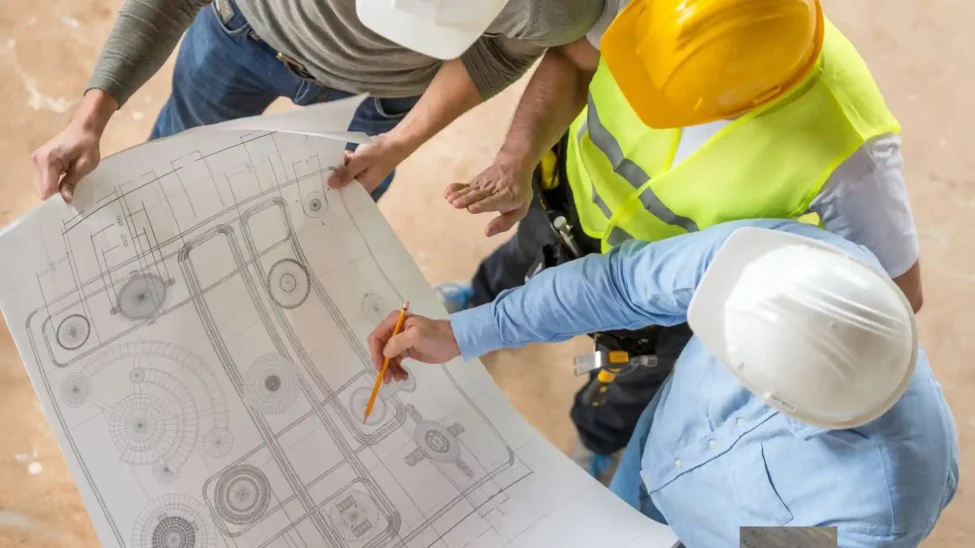
Types of Columns in Construction: A Comprehensive Guide
Building stability is largely dependent on the types of column in construction since they guarantee appropriate load distribution and support. Columns are crucial for maintaining structural integrity in civil engineering because they transmit vertical loads to the foundation.
This article examines the various types of columns in construction, along with their classifications and crucial design factors.
Detailed Types of Column in Construction
Various columns that are available are categorized in their shape, capacity to load and usage, etc. Some common types of columns are given in detail as under:
1. Pedestal Column – Types of Column in Construction
Pedestal columns are a type of columns which is relatively smaller in height and are used to bear the load-carrying member like the base of a statue or small structure or as a support for machines. These columns are normally seen in foundations where the column has to take compressive forces over a relatively smaller height.
2. Tied Column – Types of Column in Construction
Tied columns are the reinforced concrete columns wherein the vertical reinforcement is tied together using lateral ties. These are generally used to take axially applied loads and are commonly used in high-rise structures. The design of the structural column will ensure that column can effectively resist the forces working on it.
3. Braced Column – Types of Column in Construction
It is used where axial load resistance along with lateral forces like wind or earthquake loads has to be offered. Columns are often braced diagonally for stiffness and prevention of buckling.
4. Fluted Column – Types of Columns in Construction
These columns have vertical grooves or channels on their surface. They present a special appearance and are normally used in classic architecture. A fluted column can be from stone or concrete, though can be more decorative and still a column of structure.
5. Compound Column – Types of Columns in Construction
Composite columns are more than one material combined, such as concrete and steel. These result in a better load-bearing component that is highly strong and elastic, suitable for a modern skyscraper and commercial structure.
6. Stable Column – Types of Column in Construction
Solid columns are bare unornamented columns without void or gap within themselves. They mainly consist of concrete or steel materials and are mainly used in the building structure in order to hold heavy weights with axial load resistances. They are the oldest type of pillar column.
7. Slender Column – Types of Column in Construction
A high height-to-width ratio exists for slender columns. Such columns have a tendency to buckle and hence are less strong. Such columns are expected to carry relatively smaller loads but careful design of structural columns is essential.
8. Corner Column – Types of Column in Construction
Corner columns are placed where two sides or directions meet together within a structure. Such column, due to taking forces acting on it along both the dimensions of direction has been usually constructed or larger, even if less as compared with others.
9. Peripheral Column – Types of Column in Construction
Such external columns occur around the corner posts of the structures or the ends of the building where such pillars are usually vulnerable to all possible environmental forces; thus, a pillar for exposure may appear strong, although probably bigger compared with internal ones in the core space.
10. Internal Column – Types of Column in Construction
Internal columns are installed inside the building. They support the floors or ceilings from underneath. Internal columns do not face the same environment as external columns but are important for dividing and distributing structural loads.
On The Constructor India, get comprehensive explanations of the various kinds of columns used in construction.
Classification of Types of Column in Construction
Columns can also be classified according to the type of load that they endure, their shape, and material used. The following are some overviews of classifications.
Shape-Based Types of Column in Construction:
- Circular Column: Used in most round buildings or spaces.
- Square or Rectangular Column: These are used in normal conventional building plans.
- L-Shaped or T-Shaped Column: This is usually applied to the corners or where an intersection may require this column for structural purposes.
Material-Based Types of Column in Construction:
- Concrete Columns: Made of reinforced concrete, these are the most common in modern buildings.
- Steel Columns: Usually used for high load-carrying capacity and in industrial buildings.
- Timber Columns: Used in small-scale or residential buildings for aesthetic or traditional purposes.
Load-Based Types of Column in Construction:
- Axial Load Columns: Only compressive forces along their length are carried.
- Bending Load Columns: Designed to resist both axial and bending moments, usually with added reinforcements.
Visit Get Power Play to learn more about the many types of columns and how they are classified in building.
Key Considerations for Designing Types of Column in Construction
Column pillars are essential elements of any structure. Among other things, the following needs to be considered when designing a structural column.
1. Load-bearing capacity: The column has to be able to bear all loads that it will be subjected to in a building, dead load, or live load, or other forces, such as wind or seismic forces.
2. Material Strength: Proper material selection for the column will be crucial in terms of durability and strength. Concrete, steel, or composite material all have specific characteristics and will suit various types of projects.
3. Column Slenderness Ratio: The slenderness ratio between the column height and its width may be important in affecting buckling conditions. The design must ensure slender columns are appropriately reinforced.
4. Precise Reinforcement: Adequate reinforcement will assure the stability of the column for any loads it may encounter thus resisting its eventual collapse under whatever condition.
5. Environmental Condition: Exposed columns are meant to be against environmental forces of corrosion, moistures, temperature variations.
Learn more about the classification of types of columns in construction on Testbook.
Conclusion

In a building design column, these elements come in several forms that have to be very crucial when implementing the various structures. Not understanding the basic type of column classification and underlying structural column designing principles can really undermine the very construction project due to safety reasons and durability plus efficiency. Either residential home construction or a great tall skyscraper requires the pillar for the selected type of columns so as to serve well.
For an in-depth understanding of various types of columns in construction, visit Civil Today.
FAQs
What is the difference between a column and a pillar in construction?
A column and a pillar are two vertical structural elements, though “pillar” is more frequently used in the sense of decoration while “column” is referred specifically to a civil engineering load-bearing element.
What is the best material with which a column can be made in civil engineering?
Ideally, it depends on load requirements and environmental conditions. But mostly, most columns are made of reinforced concrete. Steel or composite material types may be useful for high load cases or high-rise constructions.
Design a column for both axial and bending loads are?
For the design of the column to be resistant to both axial and bending loads, structural analysis has to include bending moments and axial forces that are anticipated to occur on the column. Ties, stirrups, or lateral bracing can be provided in the column to give the structure adequate strength and stability in its design.



